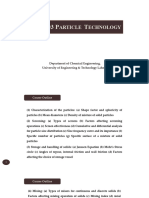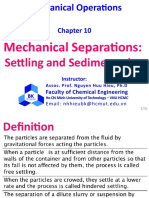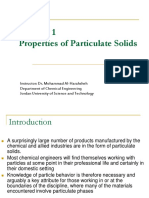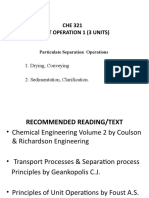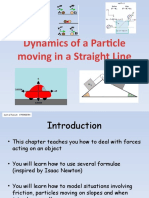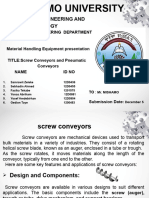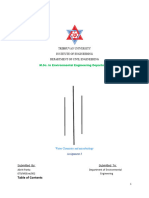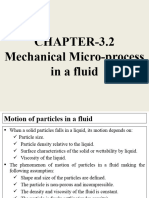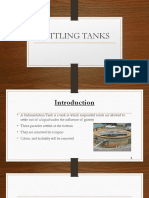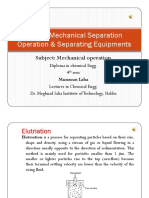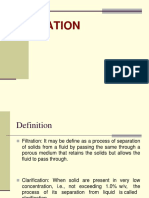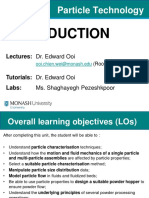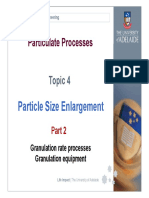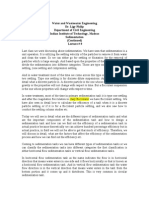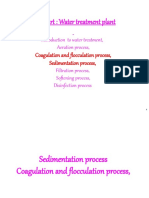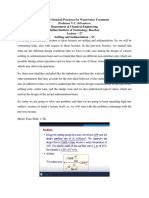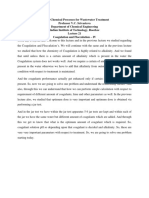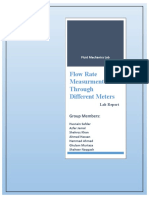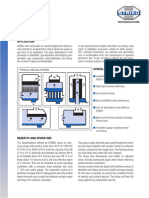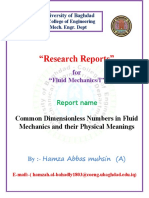0% found this document useful (0 votes)
131 views24 pagesSedimentation (Engineering Notes)
This document discusses non-ideal behaviors in settling and sedimentation basins for wastewater treatment. It identifies several factors that can cause non-ideal flow patterns, including turbulence from inlet energy dissipation, density currents due to temperature or concentration differences, and effects from wind or equipment movement. Density currents in particular can lead to short-circuiting where particles exit before fully settling. The lecturer goes on to provide specific examples of how temperature variations from changing water sources or floods can introduce density currents in the basin.
Uploaded by
meeraCopyright
© © All Rights Reserved
We take content rights seriously. If you suspect this is your content, claim it here.
Available Formats
Download as PDF, TXT or read online on Scribd
0% found this document useful (0 votes)
131 views24 pagesSedimentation (Engineering Notes)
This document discusses non-ideal behaviors in settling and sedimentation basins for wastewater treatment. It identifies several factors that can cause non-ideal flow patterns, including turbulence from inlet energy dissipation, density currents due to temperature or concentration differences, and effects from wind or equipment movement. Density currents in particular can lead to short-circuiting where particles exit before fully settling. The lecturer goes on to provide specific examples of how temperature variations from changing water sources or floods can introduce density currents in the basin.
Uploaded by
meeraCopyright
© © All Rights Reserved
We take content rights seriously. If you suspect this is your content, claim it here.
Available Formats
Download as PDF, TXT or read online on Scribd
/ 24


